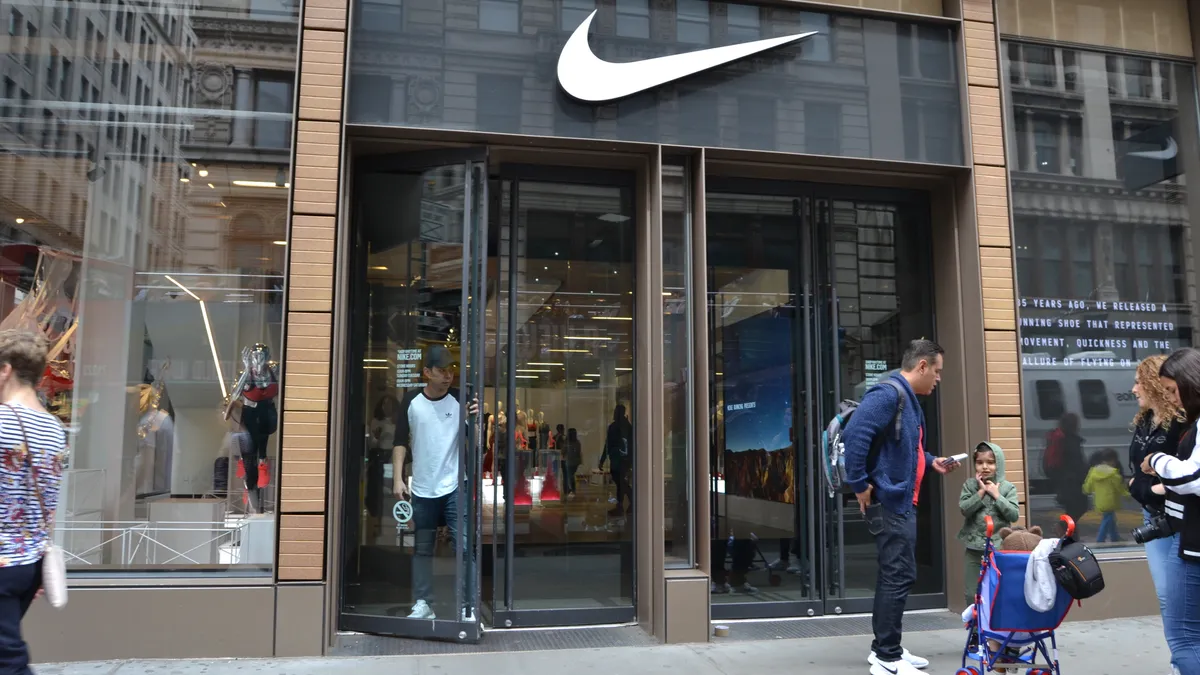Dive Brief:
- Some 25% of activewear brands offer a shopping app and 22% have one activity tracking app or more, according to a new report from Gartner L2. However, only index leaders Nike, Under Armour and Adidas offer both kinds of apps.
- Generally the brands in activewear are successful in distinguishing between shopping app and mobile site experiences, per the report, with 59% of shopping apps offering Touch ID at check-out and 35% offering a barcode scanner to facilitate product discovery.
- Most apps used by activewear brands are based on shopping or activity tracking, but the sophistication of shopping apps differs by brand, according to the study. For example, The North Face's app is integrated with its loyalty program, while Puma takes a more bare bones approach.
Dive Insight:
Mobile competition in activewear is as fierce as any other category, except many of these companies are not only expected to have a shopping app, but also activity tracking apps along with various third-party gaming and fitness apps. These secondary apps are intended to drive interest in mobile shopping, but in a crowded environment and without offering a differentiated experience, they can become a waste of precious resources for the brand, according to a report by Gartner L2.
Besides development and promotion — or in many cases, the purchase of apps from outside companies — brands also often have to invest in paid search optimization for the App Store to assure visibility and improve their ranking. For example, App Store searches for activewear-branded terms resulted in a paid ad placed by retailers like Finish Line or Overstock 46% of the time, or by other gaming and fitness apps. An online athletic shoe marketplace, GOAT, displayed ads on almost one-third of Index-branded terms, such as "Nike" and "Adidas," the report said.
"Few brands have designed digital organizations that facilitate sustainable mobile app innovation," the Gartner L2 report commented. "The strategies of industry leaders exhibit the trade-offs between the buy versus build approach."
Under Armour has spent heavily acquiring activity tracking apps, spending over $700 million on 15 apps with about 120 million users by 2017. These include MapMyFitness, which includes MapMyRun, MapMyRide and even MapMyDogWalk, along with the well-regarded calorie counter, diet and exercise app MyFitnessPal. Under Armour paid an average of $5.89 per user, according to Gartner L2 — a large amount considering that revenue from these apps has plateaued in recent years. In addition, the MyFitnessPal app was hit by a data breach earlier this year, followed a few months later by a breach of Adidas' e-commerce site.
L2 holds up Nike as a success story in the mobile space. According to the report, Nike supports shopping and activity tracking apps, with three of its apps driving over 300,000 downloads each. Nike also gets higher ratings and more reviews than its competitors. In addition, the company has launched a training pop-up based on its app and an integration with Facebook Messenger's beta AR program, which sold out of the shoes offered on the platform in less than an hour.
Another challenge for activewear mobile apps is being able to deliver on advertised features. According to the report, Adidas' commerce-enabled app, which launched in November of 2017, promised relevant content based on purchase histories and preferences, but failed to deliver, giving Nike's app another leg up in the space.












